In the never-ending search to find the best of breed snowmobile accessories and gear I proudly present to you folks part one in a series of the Snowmobile Communicator Shootout Wars: The BC Link Two-Way Radio Review.
Okay, so you may have some questions in regards to why you should get a communicator, such as: “I’ve never used one before, aren’t they expensive? If purchased today will they be obsolete in a few years and I’ll be stuck with a bunch of junk that no one can use or fix? Can I use these devices for anything else in my personal /sporting life?”
Snowmobile Communicator History
In order for you to understand why I’m examining communicators, some personal history is in order. My friend and I have been riding snowmobiles for over forty years each. We’ve used helmet communicators for 15-20 or of those years.
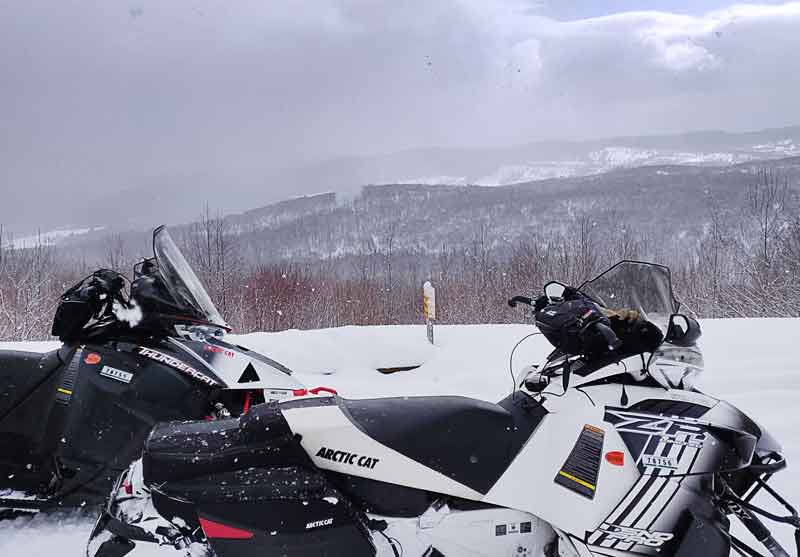
Although there wasn’t much to pick from back in the day, we purchased one of the few major brands on the market which were helmet mounted, voice activated communicators. They were simple and worked very effectively, and as such, were an important piece of our riding kit.
As time passed we started having trouble with them sporadically and in bitter cold weather. They would function properly in the hotel room or at home, when it didn’t matter, and then malfunction to on the trail, when needed.
After sending them back to the factory for repair, then replacing battery packs and power cords multiple times, it was time to search for some different options.
Snowmobile Communicator Test BC Link Two-Way Radio
Enter Back Country Access BC Link Radios, which are made in Boulder, Colorado. BCA are major players out west. Although much of their equipment is backcountry specific, such as avalanche airbags, probes and beacons, the radios are used by skiers, hikers, guides and all manner of outdoor enthusiasts. Could they be the communication tool trail riders need?
Why You Need Snowmobile Radios
Before we discuss the BC Link Radio system it’s important to look at the reasons why this writer feels communications on the trail are so important. Let’s take a look at some scenarios that can happen on the trail.
Trail Hazard Warning
Scenario #1 – You are the lead rider in a group of three. You’re heading down a groomed trail at a good clip and suddenly, without warning, there is a stream across the trail which has washed away every trace of snow.
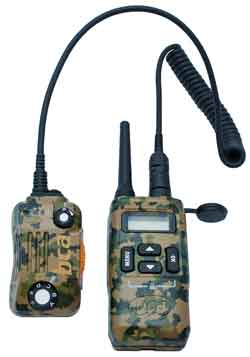
There is fast flowing water, it’s deep and longer than a ski length to the other side. There are no bailout options, it’s crunch-time.
You do what your reflexes tell you to do and suddenly jam on the brakes, skid sideways to a stop, with your ski tips in the drink, just short of full immersion. Phew! Another disaster diverted!
As this is happening you shout “Danger! Danger!” into the mouthpiece of your communicator, thus avoiding the following riders behind you from certain peril.
Maybe you haven’t had that exact same experience as we did but insert your own trail calamity in there to recall what it was like at any moment like that. Are you now convinced of the safety issue it could become?
Locate Snowmobiler
Okay, scenario #2 – You are riding along groomed trails and suddenly you look in your rear-view mirror and don’t see headlights any more. Your riding partner has disappeared. You give him a shout out via the communicator. He answers back, “Just stopped to readjust clothing.”
Instead of worrying he accidently ditched off-trail or had a mechanical, you simply slow down or stop, rather than reversing direction to check on him. Another sigh of relief moment.
Trail Conversation
Scenario #3 – It’s late in the day and you’ve been riding for what seems like forever. The signage at an intersection isn’t clear and your destination isn’t obvious as you come to a stop. Instead of shutting the machines down and unbuckling helmets to discuss a way to proceed, you calmly work out the options through the communicators and are on your way. Easy peasy!
I’ve found cell phone service to be spotty in the areas we ride, so a standalone battery-operated walkie-talkie is the way to go. Hopefully I’ve made the case for communicators to be part of your safety kit, rescue, group logistics and overall feeling of connectivity on the trail. That said, which type of communicator does one select?
BC Link Two-Way Radio 1.0 Test
Let’s take a deep dive into the specifications and functionality of these units. I was sent an original version of the BC Link two-way radio 1.0 for evaluation.
The one-watt radio is connected to the microphone by a coiled cord. The batteries are rechargeable lithium-ion by USB or 110 AC, super convenient in that aspect. The separate coiled cord allows the radio to be tucked away in your jacket or backpack while the microphone clips to the front of the jacket, thus maximizing battery life. I like it.
The units themselves are robust and appear very professionally made and that’s also good because the snowmobile environment is very unforgiving in that regard. The push to talk (PTT) button is large and glove friendly and the controls for volume and channel selection are built in to the external microphone. Very slick.
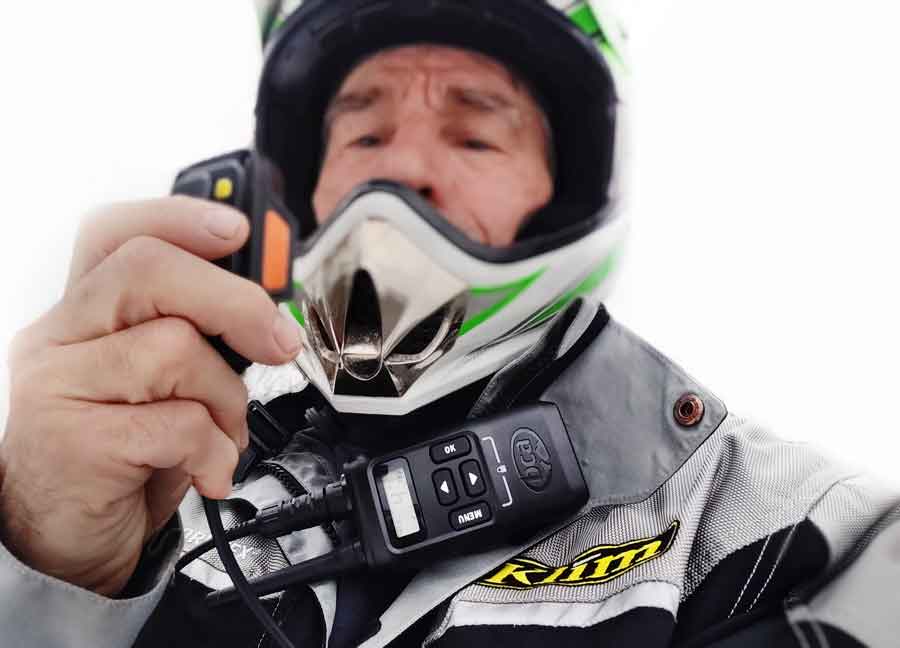
The radio platform is based on 22 FRS GMRS user frequencies with 121 sub-channels. If you’ve ever used Family Radio Service (FRS) frequencies you know they can get crowded in certain situations, so all those channels and sub-channels can make conversations more private in busy areas.
The BCA radios retail for $150 each, a pair will set you back 300 bucks, no additional accessories required. Not bad for the peace of mind that they afford you.
The controls on the radio are easy to use and well-marked for changing channels and menu options, battery life indicator, etc. One control can navigate to 11 preset weather channels but I couldn’t get any of those to work.
That’s the specs that you can read about online at backcountryaccess.com but what about my personal experience? First and foremost, folks want to know the range of communication and battery life.
BC Link Battery Life
Battery life could be described as fair under the tested conditions of 32 degrees, heavy gray skies, with biting 20 to 30 MPH winds. After a day’s use one unit was down from a maximum of three segments in the battery life indicator to one. The second unit fared better, displaying two segments of charge left. Maybe one of the batteries was older, not sure there, but I do know you will come back at the end of the day and recharge the units for the next day’s adventure.
BC Link 1.0 Range
The range was tested in semi-mountainous terrain, on foot. Line of sight range, with very clear voice, was achieved at a quarter-mile, no problem. Half mile line of sight was excellent as well. As my radio-partner disappeared behind brush and tree covered hills, communications remained excellent.
I proceeded to climb to the top of a prominent hill while my assistant kept walking farther and farther away. A half mile with no sight line, no problem. Then one mile, no problem. Occasional wind noise could be heard when the mic was keyed but that was no surprise on such a blustery day.
At 1.25 miles there was still no problem. At about one-and-a-half-milesit did get a little sketchy. Again, this was non-line of sight, so maybe a bit more could be had using 100% complete line of sight. Wow! That’s stunning range for any radios I’ve ever tested. This writer is thoroughly impressed.
The range is attributed to power output in watts and superior design. The specs claim up to 6 miles line of sight communication but that’s not realistic in the terrain I frequent.
BC Link Two-Way Radio 2.0
A newly introduced unit, the BC Link Radio 2.0, pumps out two watts of power “for increased usable range.” Hopefully I can get my hands on those and report back in the future. If they had better range than the originals I’d pony up the extra 30 bucks per unit.
Using the Two-Way Radios
Now you’ve got the specs and actual user experience. What about application? I think these radios are good for groomed trail riders wishing to stay in touch with a larger group.
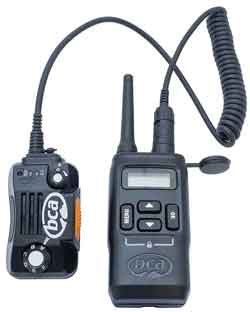
However, you must be stopped to use them properly because of the PTT feature. That’s okay though, as it seems large groups stop more often.
I would miss the voice activated (VOX) capability, as hands free communication is the ultimate, but sometimes a good old-fashioned button just plain works and is more reliable.
The radios are equipped with an earphone jack, so you could install speakers in the helmet or wear earbuds. You would still need to stop to talk but you could hear a stationary rider if they happened to be transmitting.
Superior Range
Due to the superior range of the BC Link I’d choose them for giving directions, general questions, locating a separated rider, and extraction of stuck sleds. Unfortunately, there is no triangulation feature, which would be good to find a missing person or lost sled.
Possibilities Beyond Snowmobiling
Since these radios are multi-use, the possibilities go far beyond snowmobiling. You may find yourself using them for camping, hunting, ATVing, as well as general trail grooming and trail maintenance. These could also be used by those lucky enough to snowmobile out west on a regular basis.
I hope I’ve made the case for trail side communications for all you sled heads out there. Stay riding my friends!
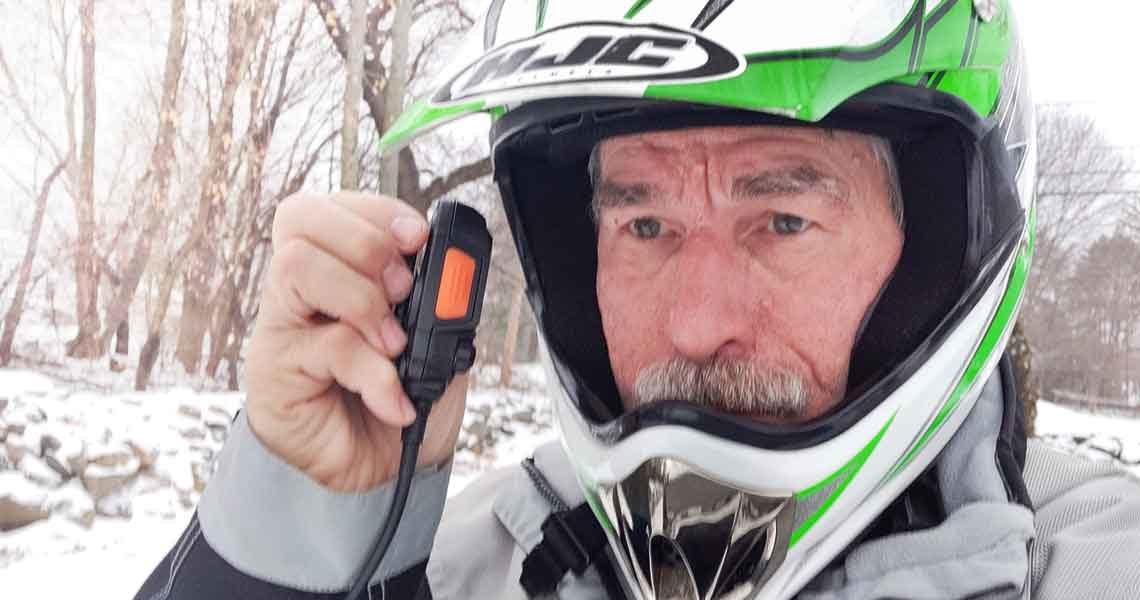
You must be logged in to post a comment.